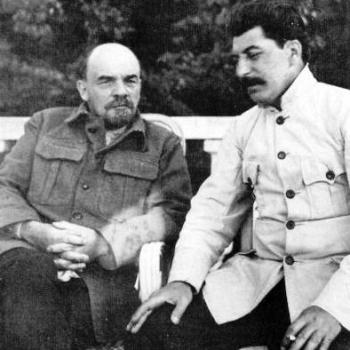Occasionally your humble servant makes reference to the fact that the United States is not a Catholic Country, and the Supreme Court has recently provided a stark reminder. The Church teaches this regarding capital punishment:
“Recourse to the death penalty on the part of legitimate authority, following a fair trial, was long considered an appropriate response to the gravity of certain crimes and an acceptable, albeit extreme, means of safeguarding the common good.
Today, however, there is an increasing awareness that the dignity of the person is not lost even after the commission of very serious crimes. In addition, a new understanding has emerged of the significance of penal sanctions imposed by the state. Lastly, more effective systems of detention have been developed, which ensure the due protection of citizens but, at the same time, do not definitively deprive the guilty of the possibility of redemption.
 Consequently, the Church teaches, in the light of the Gospel, that ‘the death penalty is inadmissible because it is an attack on the inviolability and dignity of the person’, and she works with determination for its abolition worldwide.” (Catechism of the Catholic Church, no. 2267) [1]
Consequently, the Church teaches, in the light of the Gospel, that ‘the death penalty is inadmissible because it is an attack on the inviolability and dignity of the person’, and she works with determination for its abolition worldwide.” (Catechism of the Catholic Church, no. 2267) [1]
This is, of course, the new language of no. 2267. It won’t be found in the Catechism you may have at home. The Church has come to the recognition that previous circumstances which justified the death penalty are no longer extant, and has updated the Catechism accordingly.
But the U.S. Constitution provides otherwise. As the Supreme Court in Bucklew v. Precythe recently reminded us, the “Constitution allows capital punishment.” (Id, at p. 8) [2] It is true that the Eighth Amendment prohibits “cruel and unusual punishments,” [3] but, as originally understood, this prohibited “punishments in which ‘terror, pain, or disgrace [were] superadded’ to the penalty of death,” such as “dragging the prisoner to the place of execution, disemboweling, quartering, public dissection, and burning alive, all of which…’savor[ed] of torture or cruelty.’” (Bucklew, at p. 9)
The Eighth Amendment, however, “does not guarantee a prisoner a painless death….” (Id, at p. 12) All that is required is that the mode of punishment not inflict pain unnecessarily. Pain is acceptable. Gratuitous pain is not.
 Russell Bucklew, the petitioner in the recent case, claimed that, due to his unusual medical condition (“cavernous hemangioma, which causes vascular tumors—clumps of blood vessels—to grow in his head, neck, and throat.” [Id, at p. 5]), lethal injection would be particularly painful for him. This was supported by the expert testimony of one Dr. Joel Zivot, an anesthesiologist, who opined that (1) Mr. Bucklew’s airway is compromised such that it was highly likely that it’s integrity could not be maintained after receiving the lethal injection, (2) he would “’likely experience hemorrhaging and/or the possible rupture of the tumor’ on his uvula during his execution,” (3) the hemorrhaging would “’further impede Mr. Bucklew’s airway by filling his mouth and airway with blood, causing him to choke and cough on his own blood,’” (4) it was “’highly likely that Mr. Bucklew, given his specific congenital medical condition,’” could not “’undergo lethal injection without experiencing the excruciating pain and suffering’ of ‘suffocation, convulsions, and visible hemorrhaging,’” (5) the effects of the lethal injection were “’highly unlikely to be instantaneous and the period of time between receiving the injection and death could range over a few minutes to many minutes,’” (6) the lethal injection would not result in rapid unconsciousness, and (7) Mr. “Bucklew ‘would likely experience unconsciousness that’” set “’in progressively as the chemical’” circulated “’through his system’ and that it was during this period that Bucklew was ‘likely to experience prolonged feelings of suffocation and excruciating pain.” (Dissent of Justice Breyer, pp. 3-5)
Russell Bucklew, the petitioner in the recent case, claimed that, due to his unusual medical condition (“cavernous hemangioma, which causes vascular tumors—clumps of blood vessels—to grow in his head, neck, and throat.” [Id, at p. 5]), lethal injection would be particularly painful for him. This was supported by the expert testimony of one Dr. Joel Zivot, an anesthesiologist, who opined that (1) Mr. Bucklew’s airway is compromised such that it was highly likely that it’s integrity could not be maintained after receiving the lethal injection, (2) he would “’likely experience hemorrhaging and/or the possible rupture of the tumor’ on his uvula during his execution,” (3) the hemorrhaging would “’further impede Mr. Bucklew’s airway by filling his mouth and airway with blood, causing him to choke and cough on his own blood,’” (4) it was “’highly likely that Mr. Bucklew, given his specific congenital medical condition,’” could not “’undergo lethal injection without experiencing the excruciating pain and suffering’ of ‘suffocation, convulsions, and visible hemorrhaging,’” (5) the effects of the lethal injection were “’highly unlikely to be instantaneous and the period of time between receiving the injection and death could range over a few minutes to many minutes,’” (6) the lethal injection would not result in rapid unconsciousness, and (7) Mr. “Bucklew ‘would likely experience unconsciousness that’” set “’in progressively as the chemical’” circulated “’through his system’ and that it was during this period that Bucklew was ‘likely to experience prolonged feelings of suffocation and excruciating pain.” (Dissent of Justice Breyer, pp. 3-5)
Many will wince at Mr. Bucklew confronting such a fate. Others, alas, will not. The U.S. Supreme Court didn’t find any of this convincing enough to afford Mr. Bucklew a full hearing. It upheld the lower court’s granting of a summary judgment against him.
But the truth is, anymore, capital punishment itself involves a gratuitous inflicting of pain. As the new no. 2267 of the Catechism informs us, “more effective systems of detention have been developed, which ensure the due protection of citizens but, at the same time, do not definitively deprive the guilty of the possibility of redemption.” In other words, we now have the capability to protect the public without the use of capital punishment. Therefore, we should do so.
The icon of St. Joseph the Worker is by Daniel Nichols.
Please go like Christian Democracy on Facebook here. Join the discussion on Catholic social teaching here.












